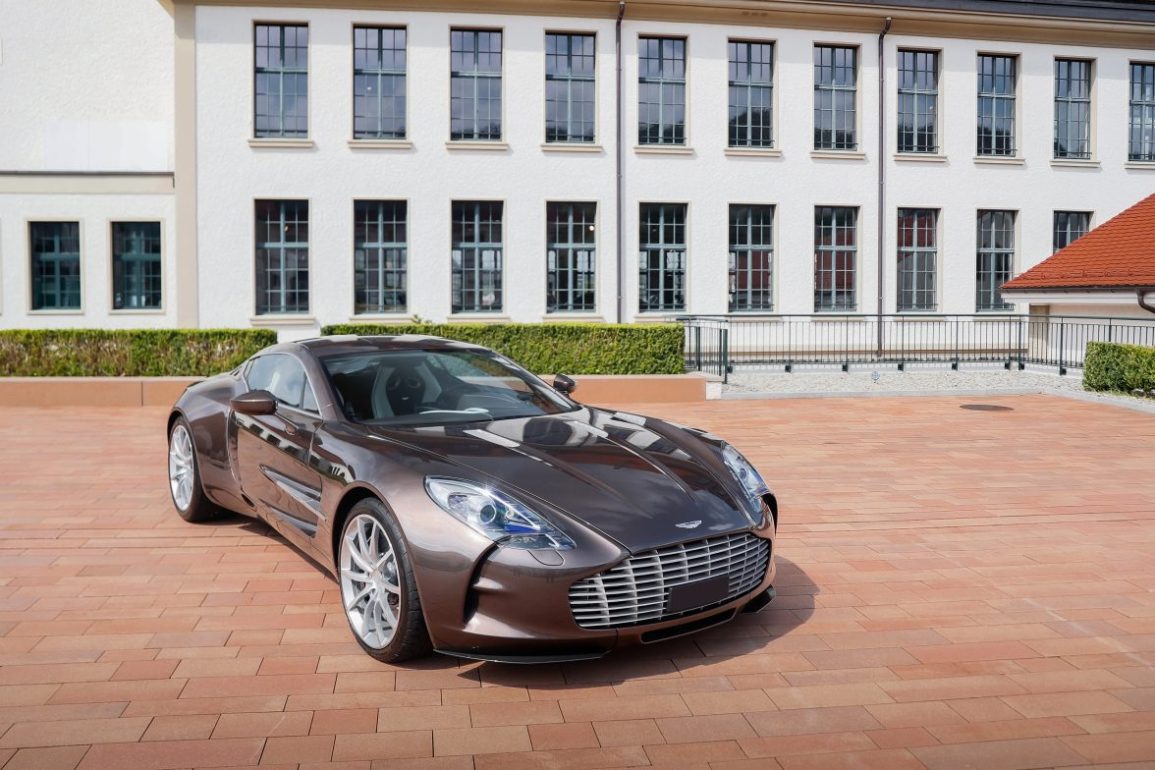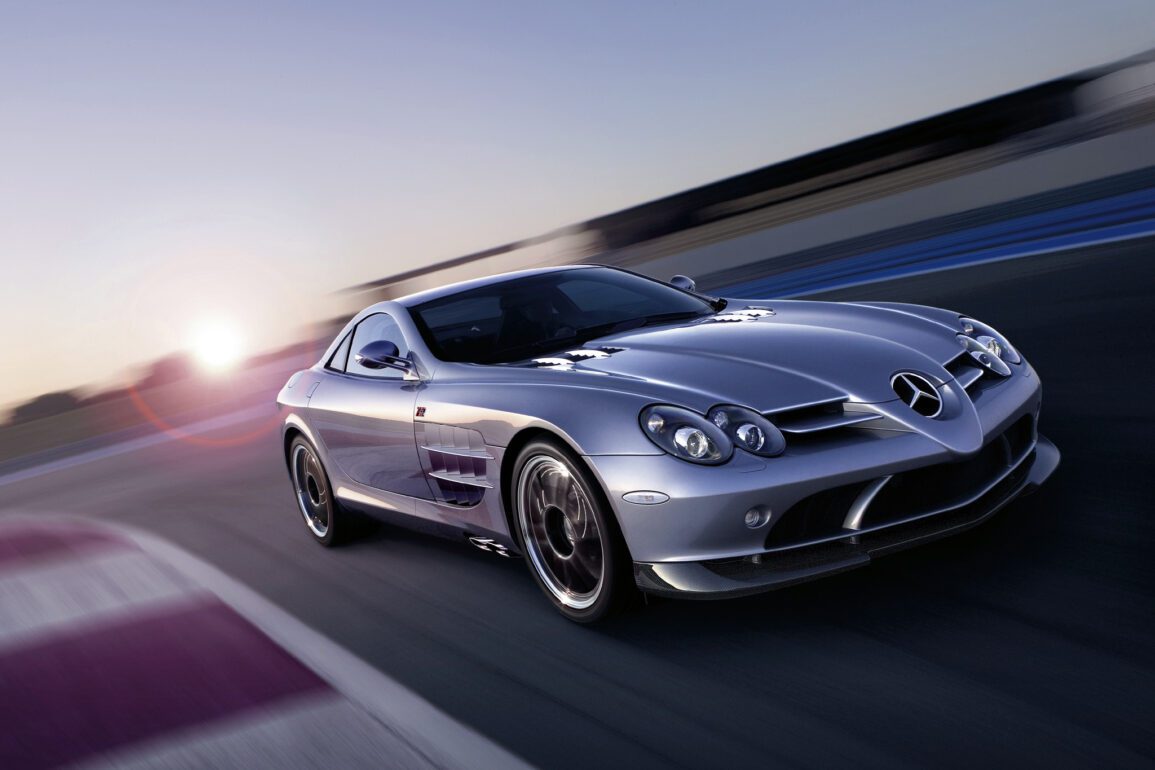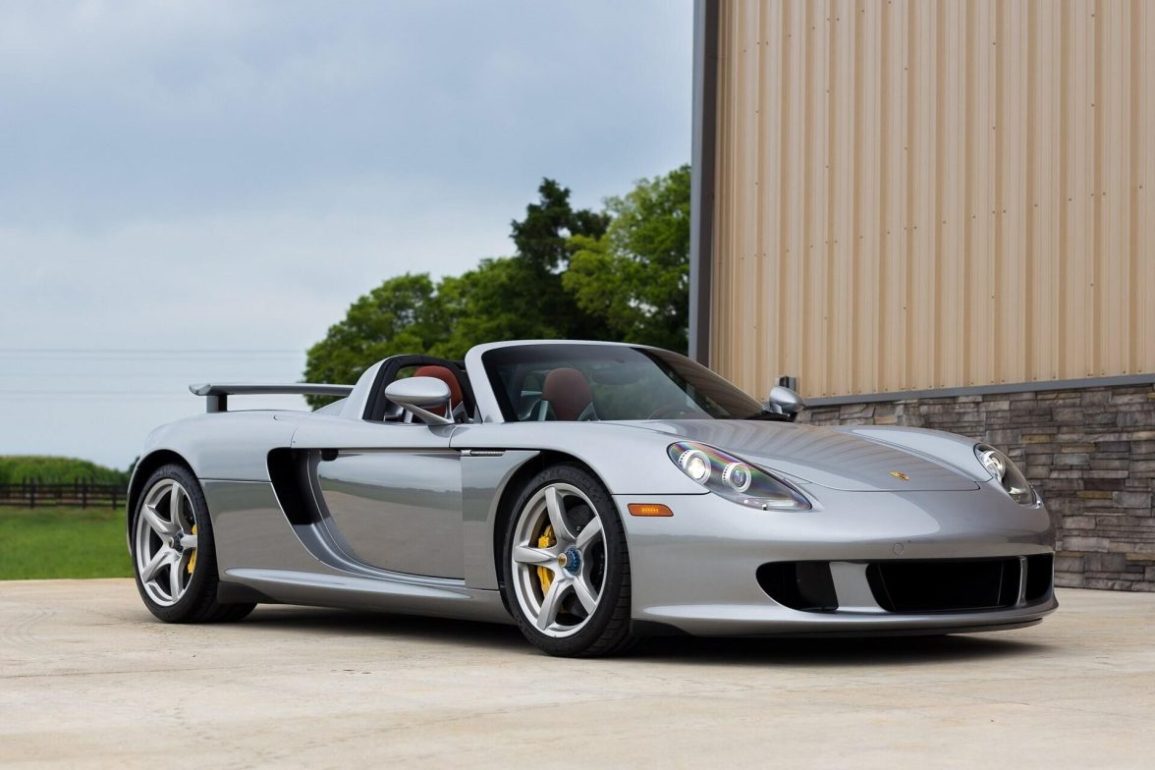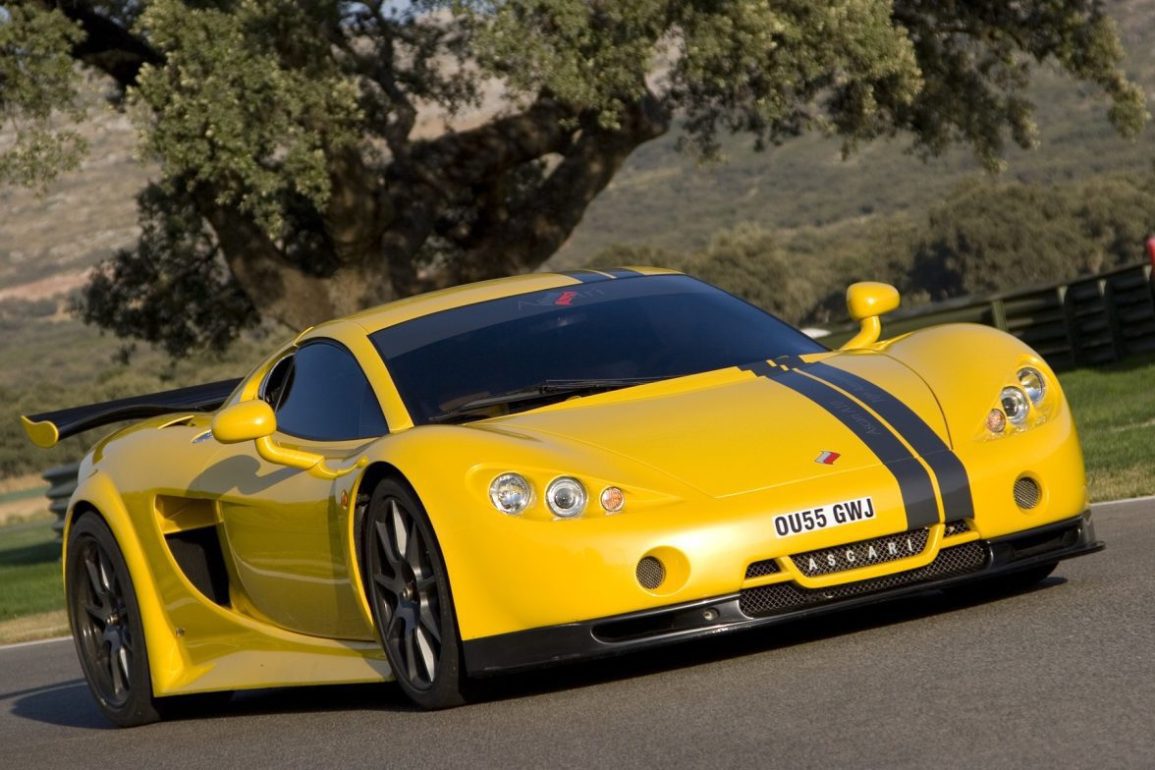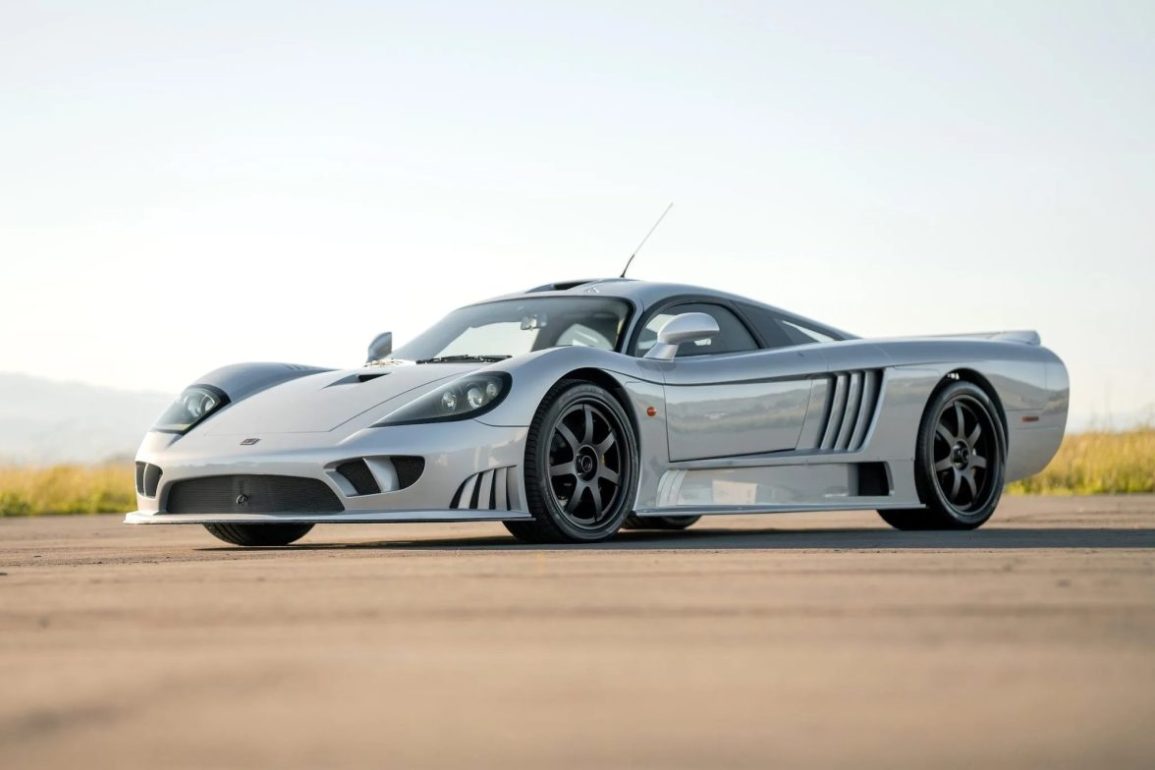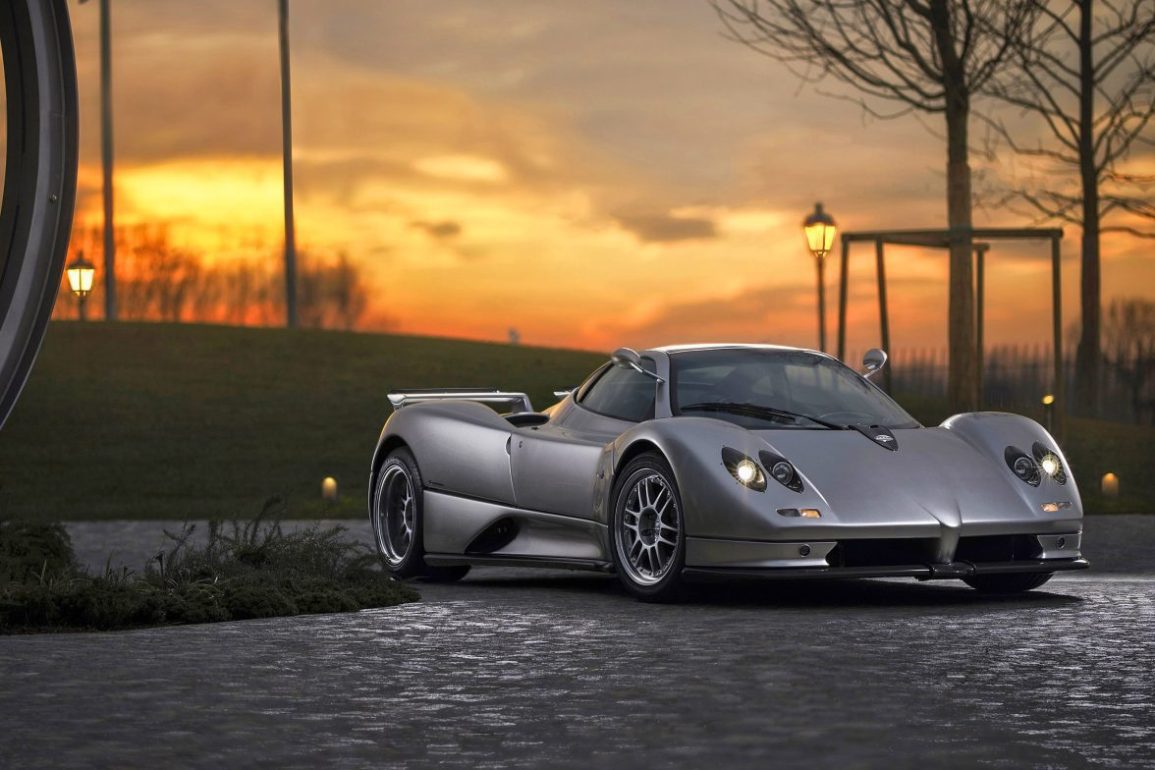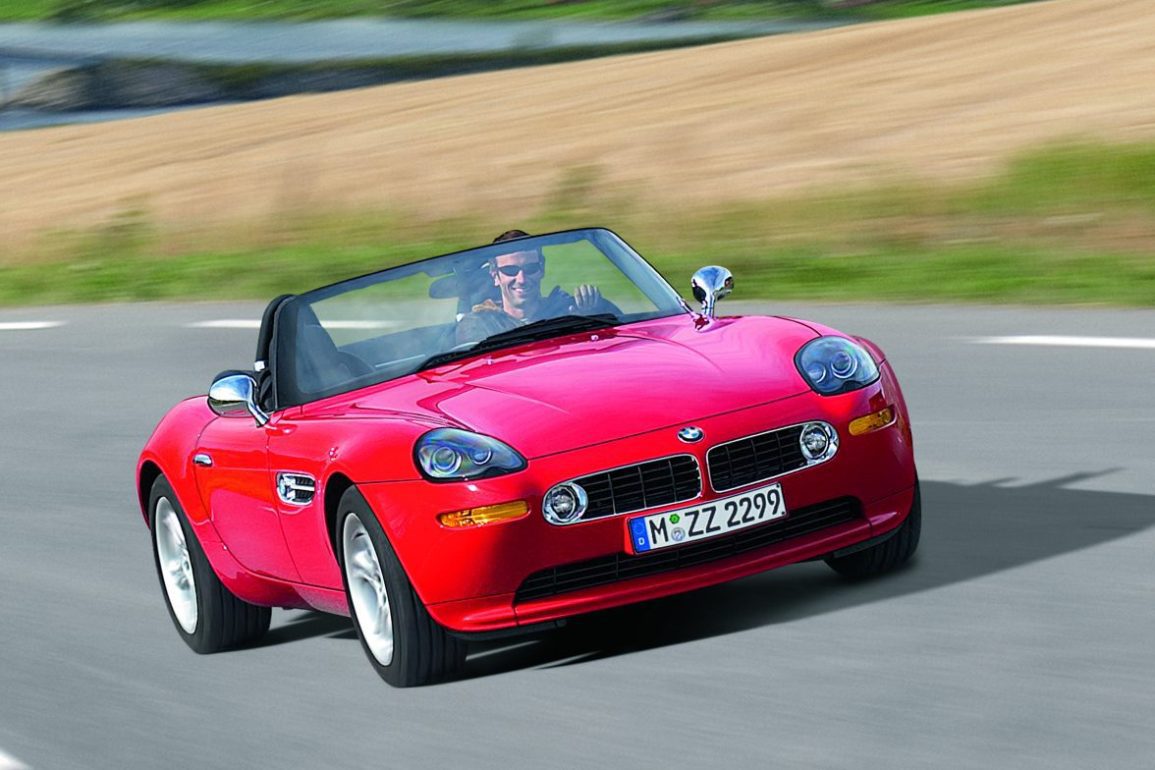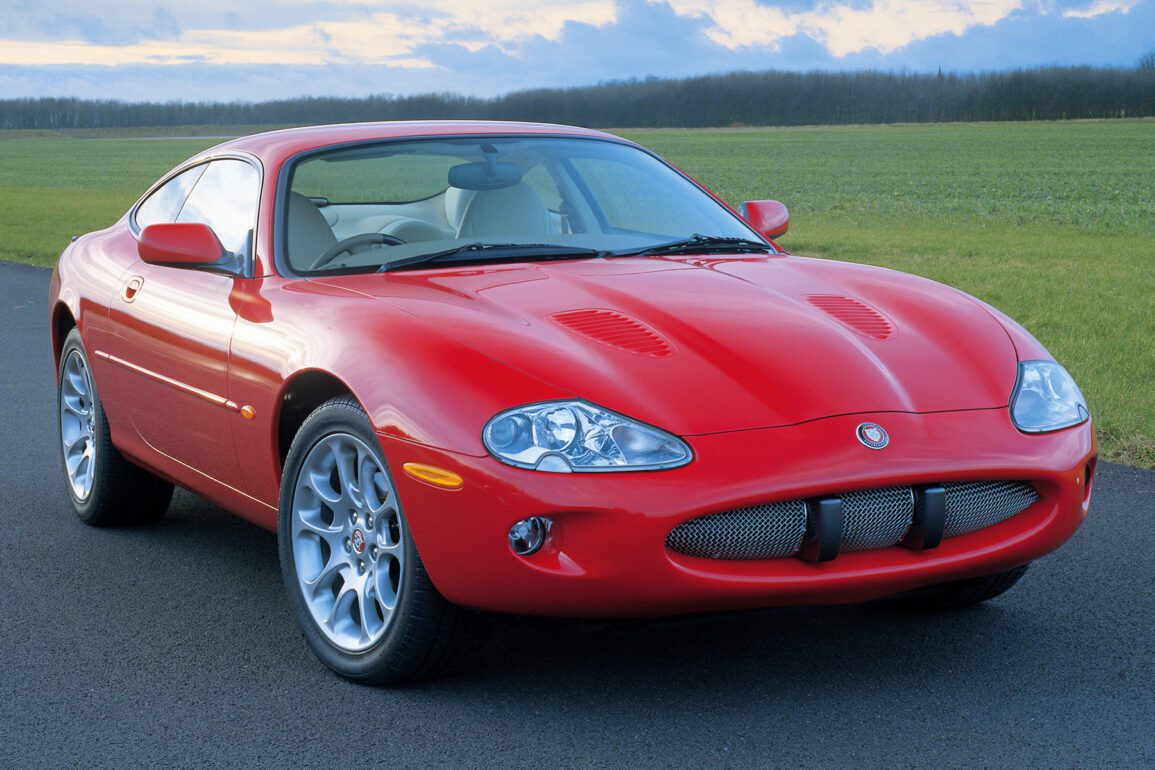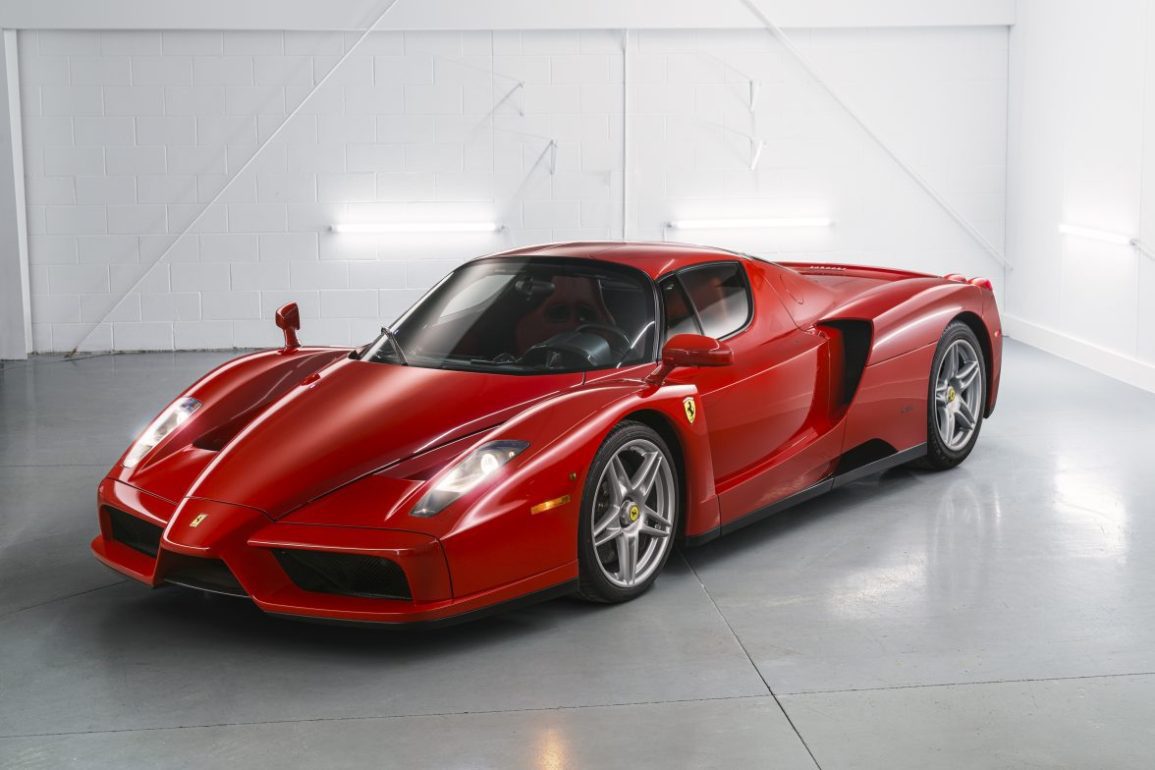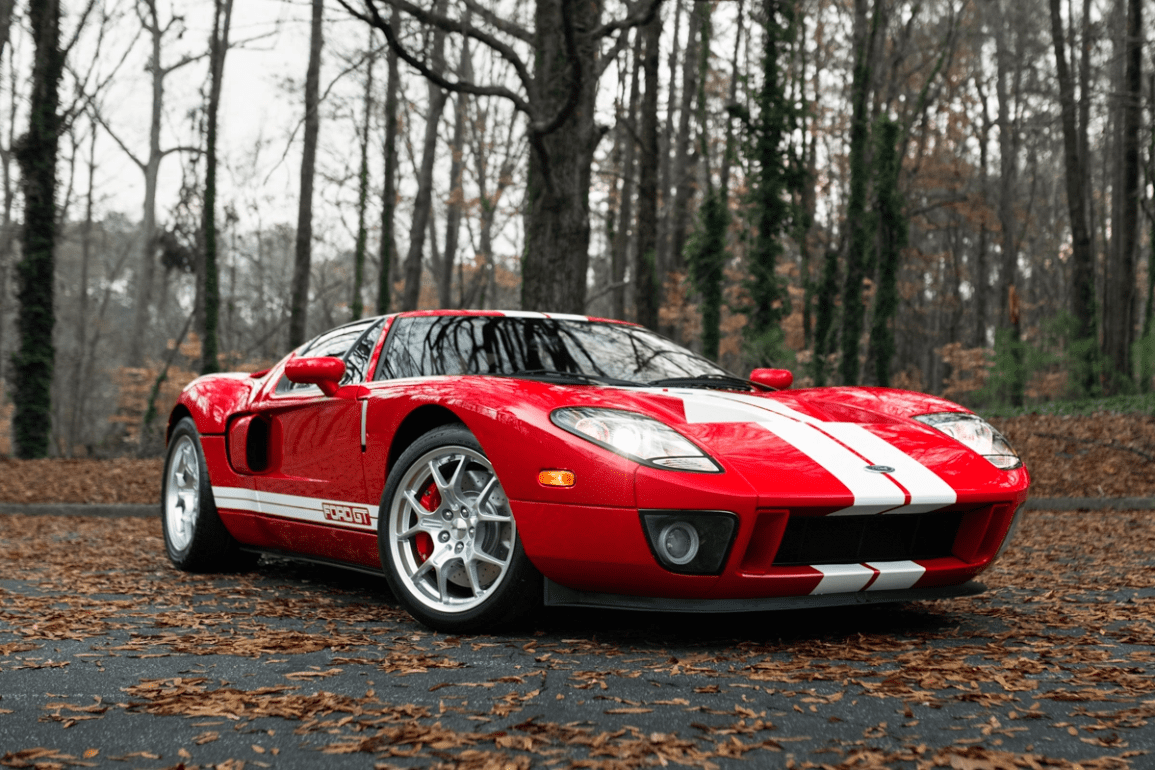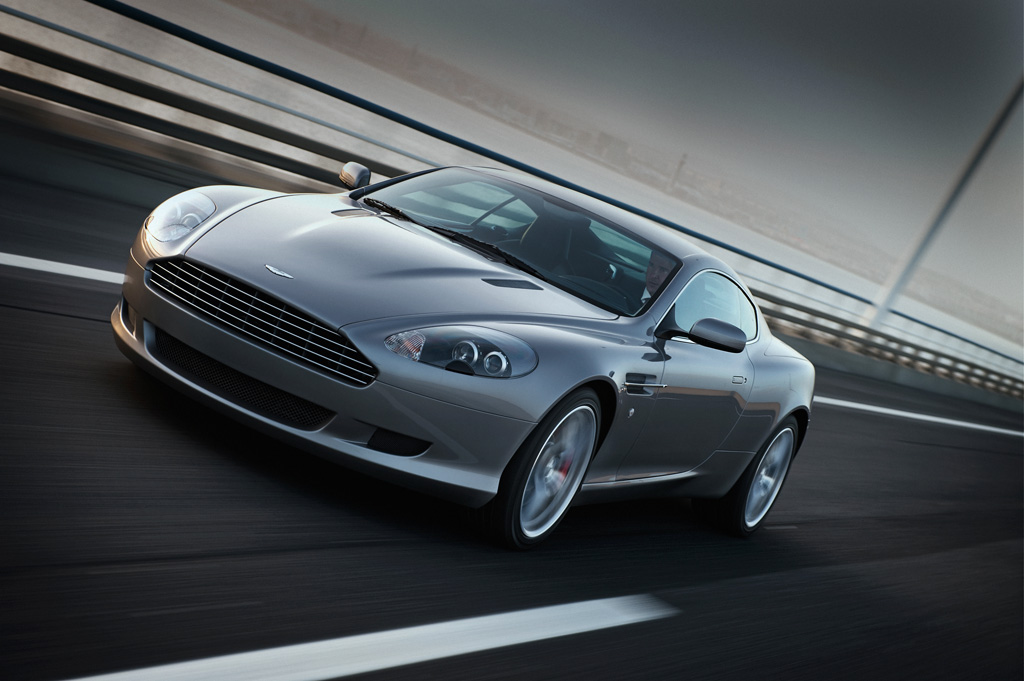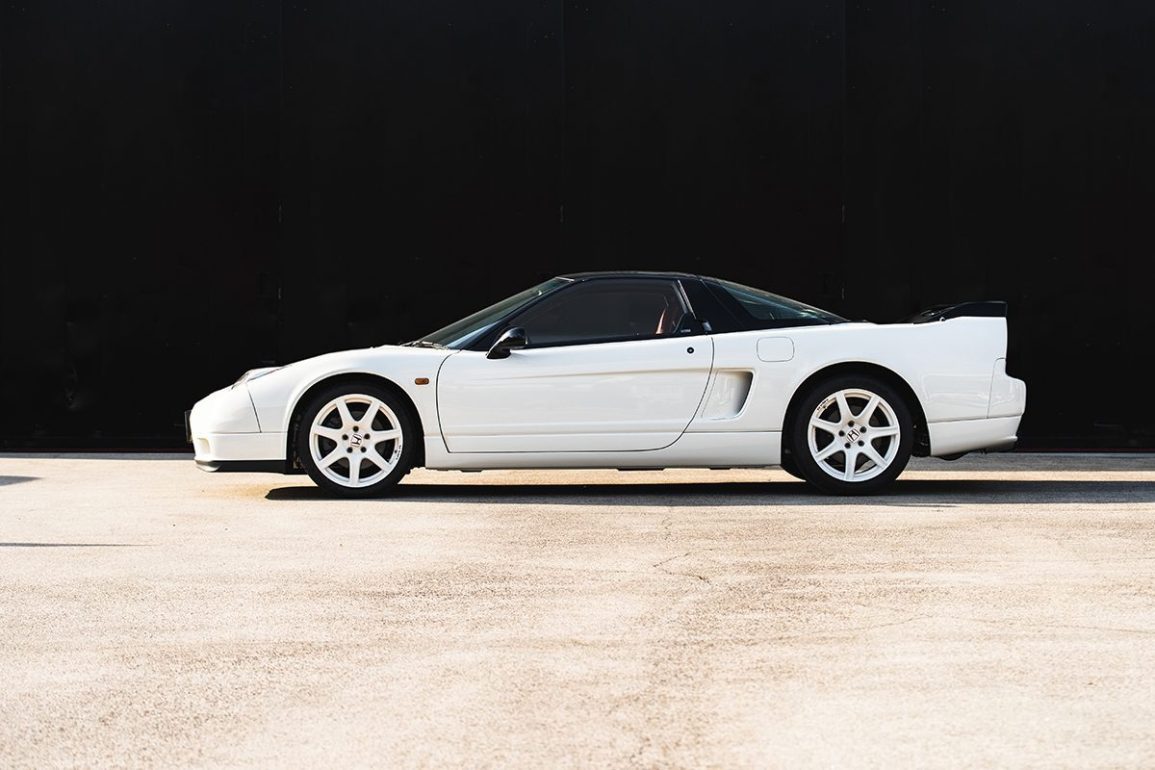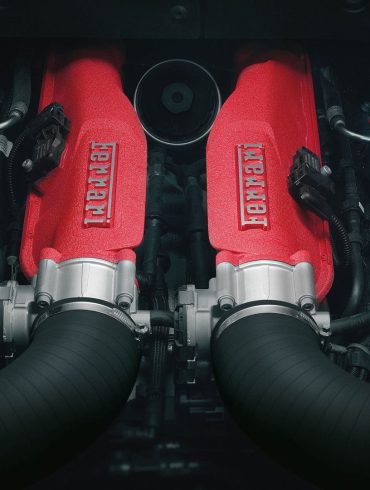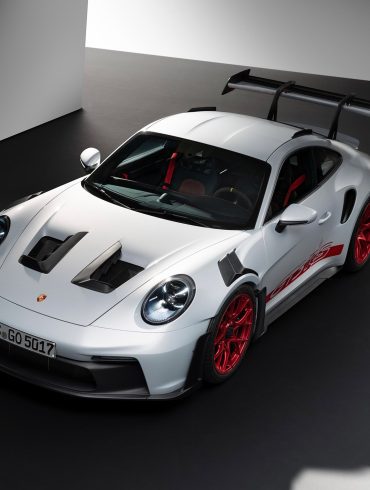Most Beautiful Cars of the 2000s
Updated January 2024 by Eduardo Zepeda
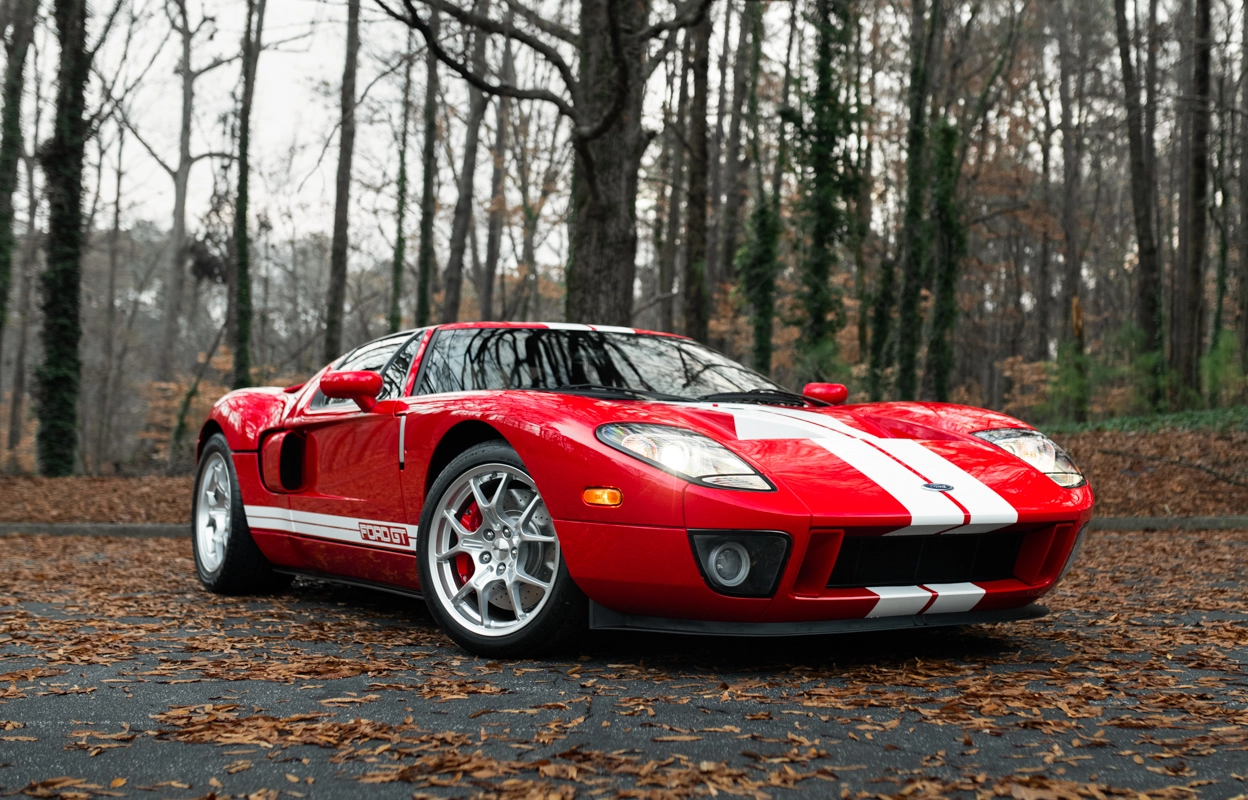
The 2000s saw several automakers achieve the pinnacle of design and performance.
About Our Selections
The turn of the millennium was an exciting time for so many reasons, and this too was certainly the case for the automotive landscape. Many regard the 2000s as a golden era for cars; a time when the collective industry seemed to achieve this perfect blend of technology, design and purpose. These days, performance is more accessible than ever and in some ways styling has evolved for the better as well.
But there remains something to be said about simpler times, especially when one begins to reminisce about a world without self-driving cars and the once greater acceptance of beauty standards that were measured through the ‘eye-of-the-beholder’. So many cars from this decade managed to carry themselves with an air of class and elegance, without needing to be haute or obnoxious. Affordable grassroots automobiles could muster up as much charisma and garner the same levels of admiration as the unpretentious (relative to today’s standards), yet objectively beautiful supercars of the day. This really wasn’t all too long ago, just thinking about it.
A new generation of automobiles that went beyond being functional vehicles and became living sculptures debuted in the 2000s, marking a watershed moment in the ever-evolving field of automotive design. Automobile manufacturers ushered in the new millennium with a plethora of hypnotic models that enthralled fans all around the globe with their futuristic designs and state-of-the-art technology. In the 2000s, the automotive scene was awash with innovative and stylish vehicles, from the pinnacle of performance for Ferrari with the Enzo to homage models like the Ford GT 40. In this article, we'll revisit and celebrate the most beautiful cars that graced the roads in the 2000s.
2009 Aston Martin One-77
One of the most powerful Aston Martins ever
Why We Picked It:
Unveiled in 2009, this masterpiece is aptly named, as only 77 units were ever produced, adding an aura of rarefied exclusivity to its allure. At the heart of the One-77 lies a naturally aspirated 7.3-liter V12 engine, handcrafted to deliver a breathtaking 750 horsepower, making it one of the most powerful naturally aspirated engines in a production car
Aston Martin's commitment to craftsmanship is evident in the car's chassis, constructed from a lightweight and robust carbon fiber monocoque, ensuring a perfect balance between agility and strength. What truly sets the One-77 apart is its bespoke approach. Each unit was meticulously tailored to the owner's specifications, allowing for personalization rarely seen in the automotive world.
The design, a harmonious blend of elegance and aggression, further emphasizes the car's exceptional character. The Aston Martin One-77 is not just a car; it's a rarefied work of automotive art, an embodiment of unparalleled craftsmanship, performance, and exclusivity.
Specifications:
Price: $1,600,000–$3,000,000
Engine: 7.3L V12
Power: 750 hp
Torque: 553 lb-ft
Transmission: 6-Speed Automatic
Curb Weight: 3,308 lbs
Highlights:
The Aston Martin One-77 was the world's most potent naturally aspirated automobile when it was introduced.
Lightweight components in constructing the One-77 include magnesium, aluminum, and carbon fiber. This maintains the car's minimal weight while giving it strength and stiffness.
Learn More:
2004 Mercedes-Benz SLR McLaren
Motorsports DNA
Why We Picked It:
The SLR from Mercedes-Benz McLaren marked the continuation of the SLR's glorious history and the return of Mercedes-Benz to high-performance sports cars. The Uhlenhaut Coupe is a manifestation of this profound love of automobiles.
Like its 1955 predecessor, the 21st-century SLR brings cutting-edge racetrack technology to the road via a contemporary take on the classic SLR's design elements and details from the 2003 Formula 1 Silver Arrows. Mercedes-Benz and its Formula One partner, McLaren, showcased their combined talents in designing the super sports vehicle, a high-performance sports automobile.
This SLR features state-of-the-art technology, just like its legendary 1955 predecessor. AMG experts used their nearly thirty years of motorsport experience with Mercedes-Benz's exacting specifications to design the powertrain. Following much conceptualization, they settled on an eight-cylinder layout, including a five-bearing crankshaft, a screw-type compressor, a 5.5-liter displacement, and a cylinder angle of 90 degrees.
Specifications:
Price: $300,000-$400,000
Engine: 5.5 Supercharged V8
Power: 626 hp
Torque: 573 lb-ft
Transmission: 5-Speed Automatic
Curb Weight: 3,843 lbs
Highlights:
The engine on the Mercedes-Benz SLR McLaren features a mechanical compressor with two Teflon-coated aluminum screw-type rotors that minimize friction losses and ensure correct cylinder charge.
AMG's principle of ‘one man, one engine’ meant each powerplant had a dedicated AMG engineer who assembled the entire engine.
Learn More:
2004 Porsche Carrera GT
The last analog supercar
Why We Picked It:
Produced between 2004 and 2007, the Porsche Carrera GT is a supercar that will go down in automotive history as a remarkable example of engineering excellence combined with design and performance. Using a thrilling six-speed manual transmission and a race-derived 5.7-liter V10 engine to deliver an astounding 605 horsepower for the rear wheels, the Carrera GT strays from the era's trend toward automated gears.
Porsche's dedication to state-of-the-art technology is evident in its push-rod suspension, ceramic brakes, and carbon-fiber monocoque chassis. The Carrera GT's open-top design gives the driving experience a more visceral quality, and its appearance seamlessly combines aerodynamic efficiency and visual refinement.
Because only 1,270 Carrera GTs were made, the car's scarcity makes it even more desirable, cementing its place in history as a classic representation of Porsche's quest for automotive perfection and an icon of automotive engineering.
Specifications:
Price: $1,000,000-$3,000,000
Engine: 5.7L V10
Power: 612 hp
Torque: 435 lb-ft
Transmission: 6-Speed Manual
Curb Weight: 3,042 lbs
Highlights:
The Porsche Carrera GT benefited from the company's participation in endurance racing, where its carbon fiber technology withstood the most rigorous testing in the early 2000s.
It was hand-built with the highest quality materials and craftsmanship, limited to just 24 units.
Learn More:
2006 Ascari A10
2000's supercar killer
Why We Picked It:
The A10, Ascari's third model, was released to commemorate the company's first decade in operation. Similar in appearance to the Ascari KZ1, the A10 is lighter and more robust because of Ascari's use of carbon fiber throughout the body. The vehicle's handling and responsiveness were further enhanced by installing a new suspension. Lee Noble, who is also known for creating the Noble M10, designed the A10.
The A10's 5.0-liter BMW V8 engine produced an impressive 625 horsepower, giving it exhilarating acceleration. The lightweight construction, featuring a carbon fiber body on a tubular steel chassis, contributed to its dynamic handling and agility. Significant advancements have been made when comparing horsepower per ton to a Bugatti Veyron. The Ascari A10 can accelerate to 60 mph in around 2.8 seconds from a complete stop.
With only 50 devices manufactured, the Ascari 10 had a short existence, as production halted in 2007. But many in the car industry still hold it in the highest esteem. This car is mind-blowing in its design, performance, and engineering.
Specifications:
Price: $377,000-$630,000
Engine: 5.8L V8
Power: 625 hp
Torque: 553 lb-ft
Transmission: 6-Speed Sequential
Curb Weight: 2,822 lbs
Highlights:
Unlike many track-focused cars, the A10 was equipped with all the necessary features for legal road use, including headlights, taillights, turn signals, and even a passenger seat.
Despite its track-focused build, the A10 prioritized lightweight materials like carbon fiber for the chassis and bodywork, resulting in a surprisingly nimble and responsive driving experience.
Learn More:
2000 Saleen S7
A true American supercar
Why We Picked It:
The Saleen S7 was the pinnacle of Steve Saleen's (founder and CEO) extensive career customizing Ford Mustangs, which began in 1983. This car achieved its iconic status through its extraordinary power, design, and performance combination. At its core, a handcrafted 7.0-liter V8 engine produced a formidable 750 horsepower, propelling the S7 to top speeds of over 200 mph. The distinctive butterfly doors, which accentuated its aerodynamic profile, contributed to its striking appearance and improved its high-speed stability.
The Saleen S7's chassis was an aluminum monocoque structure, contributing to its lightweight yet robust construction. Notably, it featured a mid-engine layout, providing an optimal weight distribution for superior handling. With its racing heritage and limited production numbers, the S7 became a symbol of exclusivity, with only a handful produced annually. Ultimately, the Saleen S7's blend of power, design innovation, and exclusivity solidified its place as a legendary American supercar.
Specifications:
Price: $650,000-$1,200,000
Engine: 7.0L V8
Power: 550 hp
Torque: 570 lb-ft
Transmission: 6-Speed Manual
Curb Weight: 2,865 lbs
Highlights:
The Saleen S7 was a great car for its time, especially compared to American sports cars. It was a fast, light, and aerodynamic racecar that could go up against the best in Europe.
As a supercar, the S7's minimal weight was due to its carbon fiber body and lightweight steel and aluminum honeycomb chassis.
Learn More:
2001 Pagani Zonda C12
The genesis of Pagani
Why We Picked It:
Pagani's first production car, the Zonda C12, debuted at the 1999 Geneva Autoshow and went on sale in 2001. The interior of the unique coupe was as impressive; it had a curved windshield and was designed like a fighter jet. The Mercedes-sourced 6.0-liter V12 engine produced 394 horsepower and 420 lb-ft of torque when mated to a five-speed manual transmission.
The groundbreaking use of carbon fiber in Pagani's debut vehicle, the Zonda C12, directly resulted from Pagani's experience working with the material at Lamborghini. He could employ it creatively in his debut car, the Zonda C12. According to CEO Horacio Pagani, they aimed for a "sensual" design, with the rear bonnet symbolizing a woman's hips and the wheel arches evoking a woman's bosoms.
The seats inside would be designed to enclose the shoulders like an inverted pyramid, giving the impression that the woman is safe and the man is strong. It's a difficult search for fundamental ideas. In conclusion, the Zonda.
Specifications:
Price: $3,200,000
Engine: 6.0L V12
Power: 394 hp
Torque: 420 lb-ft
Transmission: 5-Speed Manual
Curb Weight: 2,755 lbs
Highlights:
A pioneer in using carbon fiber in supercar construction, the C12 was both lightweight and exceptionally rigid. This improved its outstanding performance.
With a 0–60 mph time of 4.2 seconds, the Pagani Zonda C12 can reach a top speed of around 185 mph (297 km/h).
Learn More:
2000 BMW Z8
A proper roadster for the new millennium
Why We Picked It:
Unveiled at the turn of the millennium, the sporty two-seater BMW Z8 was the company's wager for the decade, and it left an impression on spectators with its breathtaking good looks and classic proportions. Equally impressive to the Z8's futuristic appearance is its self-supporting space frame chassis construction made of aluminum.
Under the hood of its stylish, component-attachable body is a potent eight-cylinder engine that displaces about five liters of fuel. A six-speed manual transmission sends 400 hp and 369 lb-ft of torque from the vehicle's 4.9-liter V8 engine to the back wheels.
The Z8 had numerous characteristics with the M5 of its day, and it could have benefited from upgrades made to the Ferrari 360 Modena during that time. The BMW Z8 is the real-life counterpart of the Z07 concept, which debuted at the 1997 Tokyo Auto Salon, paying homage to the legendary BMW 507 Roadster.
Specifications:
Price: $200,000-$400,000
Engine: 4.9L V8
Power: 400 hp
Torque: 425 lb-ft
Transmission: 6-Speed Manual
Curb Weight: 3,494 lbs
Highlights:
The Z8 came exclusively with a six-speed manual transmission, reflecting a commitment to a pure, driver-focused experience and adding a level of engagement that enthusiasts appreciate.
The Z8's design is a nod to the classic BMW 507 roadster, featuring clean lines, a long hood, and a distinctive twin-kidney grille. Henrik Fisker's retro-modern styling adds to its timeless appeal.
Learn More:
2001 Jaguar XKR Coupe
The luxurious grand tourer
Why We Picked It:
Representing Jaguar's dedication to aesthetics, the 2001 XKR displays classic British beauty with its graceful and elegant design and exquisite contours. There's no denying that it's one of the most breathtaking Jaguars ever made. A 4.0-liter supercharged V8 engine derived from the AJ-V8 family powers this grand tourer. The supercharger increases the engine's output to 370 horsepower and 387 lb-ft of torque.
The XKR's competent 5-speed automated transmission makes shifting gears a breeze and sends power directly to the back wheels. Its adaptable suspension technology improves handling and the overall driving experience.
Precision steering and fine-tuned chassis qualities expertly balance nimble handling and elegant cruising. The cabin's mood is elevated using leather seats, beautiful wood trim, and brushed metal accents. With the release of the XKR, Jaguar cemented its position as a leading maker of luxurious grand tourers.
Specifications:
Price: $10,000-$25,000
Engine: 4.0L Supercharged V8
Power: 370 hp
Torque: 387 lb-ft
Transmission: 5-Speed Automatic
Curb Weight: 3,825 lbs
Highlights:
The XKR stood out as a powerful tourer that combined the usual Jaguar luxury and performance with an elegant and exciting ride.
With its potent performance, luxurious interior, and timeless design, the 2001 XKR is becoming a collector's item.
Learn More:
2003 Ferrari Enzo
The pinnacle of Ferrari
Why We Picked It:
The Ferrari Enzo unveiled in 2002 is a testament to Ferrari's relentless pursuit of automotive perfection. Named after the company's founder, Enzo Ferrari, this hypercar represents the pinnacle of performance, design, and technological innovation. What makes the Ferrari Enzo truly special is its Formula One-inspired engineering.
Under the hood, it boasts a 6.0-liter V12 engine that produces a staggering 660 horsepower, catapulting it from 0 to 60 mph in just 3.1 seconds.
The Enzo's chassis is a marvel, crafted from carbon fiber and composite materials, ensuring optimal strength and minimal weight. Its active aerodynamics, adaptive suspension, and advanced traction control make it a master of the track and the road. Limited to just 399 units, the Enzo's exclusivity adds to its allure, making it a prized collector's item.
Every detail, from its futuristic design to its roaring engine, contributes to the Ferrari Enzo's status as an iconic and extraordinary supercar in automotive history.
Specifications:
Price: $2,500,000-$3,000,000
Engine: 6.0L V12
Power: 660 hp
Torque: 485 lb-ft
Transmission: 6-Speed Semi-Automatic
Curb Weight: 3,020 lbs
Highlights:
Handling and agility were key considerations in the design of the Enzo. A carbon-fiber body and an advanced suspension system made it lightweight. Because of this, it was considered to have excellent handling for its time.
The Ferrari Enzo is a unique car because it was at the peak of its engineering and design at the time. It was also the result of Ferrari's long history of making racing cars that could be driven on the road.
Learn More:
2005 Ford GT
Legacy and nostalgia
Why We Picked It:
The 2005 Ford GT was a modern interpretation of the legendary Ford GT40, a four-time winner of the 24 Hours of Le Mans, carrying the torch of Ford's racing heritage and evoking nostalgic memories for car enthusiasts.
The 2005 GT had exposed aerodynamic features, butterfly doors, and a sleek, low-slung silhouette similar to the original GT40. It wasn't just fast; it looked the part of a supercar.
Under the hood resided a 5.4-liter supercharged V8 engine generating 550 horsepower and 500 lb-ft of torque. This powerhouse propelled the GT from 0 to 60 mph in just 3.4 seconds and reached a top speed of 205 mph, placing it squarely within the elite ranks of high-performance cars.
Unlike many modern supercars with many electronic aids, the 2005 GT focused on driver engagement. The six-speed manual transmission and responsive handling demanded skill and respect, rewarding experienced drivers with an unadulterated connection to the machine.
Specifications:
Price: $276,000-$340,000
Engine: 5.4L V8
Power: 550 hp
Torque: 500 lb-ft
Transmission: 6-Speed Manual
Curb Weight: 3,550 lbs
Highlights:
The use of advanced materials like carbon fiber and a driver-centric interior showcases Ford's commitment to pushing boundaries in performance and craftsmanship.
With only 4,038 units produced throughout its two-year run, the 2005-2006 GT remained a rare sight on the roads, further adding to its allure and increasing its collector value.
Learn More:
2004 Aston Martin DB9
Elegant grand tourer, iconic V12 power.
Why We Picked It:
James Bond. 007. Is there any other car in the world that is more synonymous with one thing, than the Aston Martin DB9? Probably not. Suffice to say, this British grand tourer was able to match the suave levels of its most famous driver, and then some. Succeeding the DB7, the Aston Martin DB9 debuted at the Frankfurt Motor Show in 2003. The first cars in the series boasted a 5.9L V12 producing 444 horsepower; this made a 0 to 60 mph acceleration time of just 4.8 seconds possible. The maximum speed was set at 299 km/h although some have claimed it can be pushed beyond 300 km/h.
The Aston Martin DB9 is a modern interpretation of a traditional Aston Martin sports car, representing a contemporary version of classic DB design elements and characteristics. “Aston Martins are not edgy cars – they don’t have sharp surfaces or pronounced power domes” said Hank Fisker, Director of Design. “The bodywork is elegant and gently curved, like a supremely fit person, with great muscle tone. But it is not like a body builder, who is bulky and out of harmony.”
Highlights
There is a pronounced boot – a noticeable feature of the DB4 and DB5 – and the haunches on the rear wings are wide and curvaceous. The aluminum bonnet runs all to the way to the leading edge of the car.
The DB9’s bumpers are invisible. The front number plate is part of the crash structure and computer modelling has enabled Aston Martin to use invisible -hard pressure zones- to cope with bumps.
Learn More:
1998 Honda NSX (NA2)
Everyday supercar, aluminum pioneer.
Why We Picked It:
When the NSX was first introduced to the world in 1990, it sent shockwaves throughout the automotive dimension, pioneering an unprecedented amalgamation of characteristics and engineering principles. At a time when the words ‘supercar’ and ‘reliability’ couldn’t be spoken in the same sentence, the formula Honda used to create the NSX resulted in a vehicle that was truly unique for its time – it had all of the desirable characteristics of a supercar, but was packaged with the same reliability, build quality and sensibility of a Honda Accord.
By the time the new millennium had rolled in, the NSX had become a classic but aging beauty. In 2002, the car got a makeover which included some much needed aesthetic updates to modernize it. Fixed headlights to replace the pop-ups, along with more streamlined front and rear fascias, and larger wheels, ushered in a new era for the original NSX, dubbed NA2. Shortly after the facelift, Honda released a Type-R version of the NA2 NSX which was exclusive for MY2002 and for the Japanese market only – just like it did for the NA1 NSX in 1992. By this time, the Type-R moniker had become the official signature of ultimate Honda road car performance, and the 2002 Honda NSX Type-R (officially abbreviated to NSX-R on this occasion), certainly lived up to its badge.
Highlights
Unlike the first generation (NA1), the NA2 ditched the pop-up headlights for fixed xenon units. This change was partly due to pedestrian safety regulations and partly to improve aerodynamics.
NA2 received a bump in displacement, going from a 3.0-liter V6 to a 3.2-liter V6. This resulted in a modest increase in power and torque, improving performance.
While aluminum is common in car manufacturing now, the NSX was a pioneer in this area. This helped keep the car lightweight and agile.


